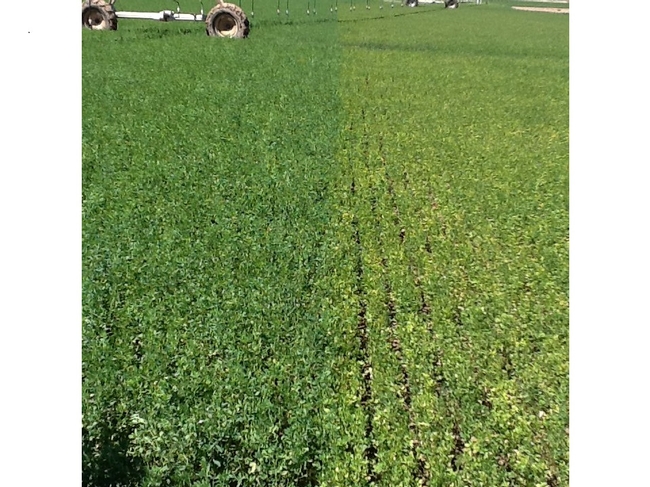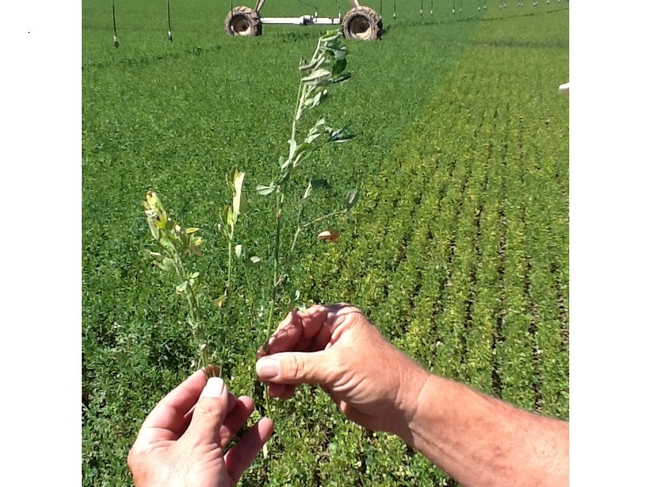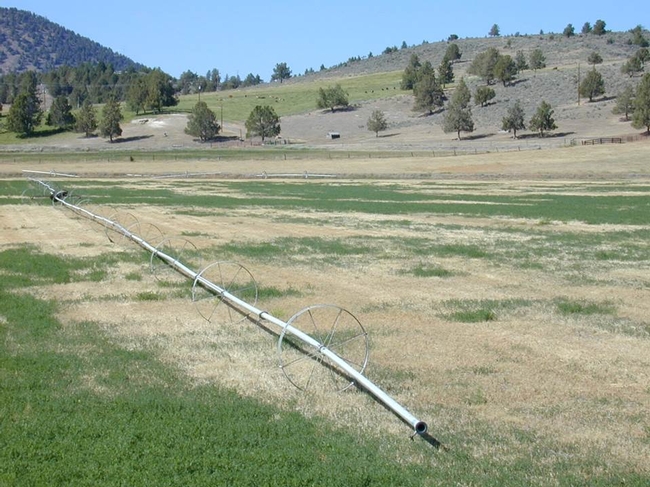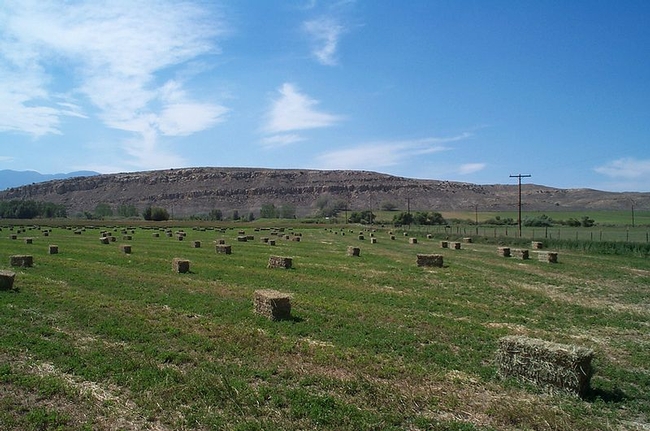Posts Tagged: alfalfa
New GMO alfalfa holds exciting possibilities, UC expert says
Good news for dairy cows. Science has found a way to produce alfalfa with less lignin, a component of the plant that has no nutritional value. The new alfalfa variety – genetically modified in a way that puts brakes on the lignin-producing gene – was deregulated by USDA in November.
“In general, a reduced lignin trait in alfalfa is very welcome,” said Dan Putnam, UC Cooperative Extension specialist in the Department of Plant Sciences at UC Davis. “The low-lignin trait has some interesting potential implications for dairy cows and other ruminants, as well as for yield, agronomic efficiency, and even energy and water use efficiency.”
The new variety, called KK179, was developed by Forage Genetics International, Monsanto and the Nobel Foundation. Some of the field testing took place at UC Davis and the UC Intermountain Research and Extension Center in Tulelake, Calif.
KK179 differs from most other GMO agricultural crops in that the modification improves the plant quality. Other common modifications, such as glyphosate resistance and addition of a Bt gene, were designed to help with pest control.
Another difference is the source of the modified gene, Putnam said. In glyphosate-resistant (Roundup Ready) alfalfa, for example, the plant was modified by inserting a bacteria gene. Gene segments reducing lignin were derived from alfalfa itself.
Lignin is a fibrous part of cell walls in plants. It strengthens stems, helping the plant grow upright. However, its concentration in alfalfa is high compared to other forages, a drawback for what is considered the premiere forage of dairy cows.
“Farmers often try to cut early to reduce lignin,” Putnam said. “Unfortunately, yields are decreased by early cutting, often by many tons per acre. If growers were able to harvest later and still obtain good quality, yields would improve.”
That leads to the potential energy- and water-conserving aspects of the KK179 alfalfa.
“If growers reduce harvests by one each year and increase yields with no quality penalty, energy use would decline,” Putnam said. “Also, the amount of milk produced per unit of water used to grow the feed may be increased.”
KK179 won't be for everybody, Putnam cautions. Some export markets reject GMO technology, so growers should check whether their markets will accept alfalfa with the low-lignin trait. Another concern is the possibility of gene flow for farmers who grow alfalfa seed for organic production or export.
“Further research and experience by farmers and researchers are needed to fully understand the importance and implications of reduced-lignin alfalfa on farms,” Putnam said, “but this trait holds some very exciting possibilities.”
An initiative to enhance competitive and sustainable food systems is part of the UC Division of Agriculture and Natural Resources Strategic Vision 2025
The Blue Alfalfa Aphid: A continuing problem
The blue alfalfa aphid, Acyrthosiphon kondoi Shinji was first identified by entomologists in the spring of 1975 in the Imperial Valley...
Management of 'Hoppers' that Infest Alfalfa in California's Southern Desert
Introduction Alfalfa (Medicago sativa L.) has been cultivated in California since it was first introduced from Chile in 1850. Alfalfa yields can be...

Hairy alfalfa vs non hairy 2014

Hairy alfalfa vs non hairy 2014b
Alfalfa’s resilience to drought
The recent rains were a welcome relief for many parts of our state, but we are still in a serious drought with our reservoirs and snowpack at...

Photo: Impact of no irrigation on alfalfa during summertime. However, due to alfalfa’s resilience to drought, yield will recover once the field receives water the following winter.
Co-existence of RR and Conventional Hay Fields
At the Alfalfa and Forage Meeting held at the Kearney Agricultural Center in September, we provided a demonstration of the co-existence of Roundup...


